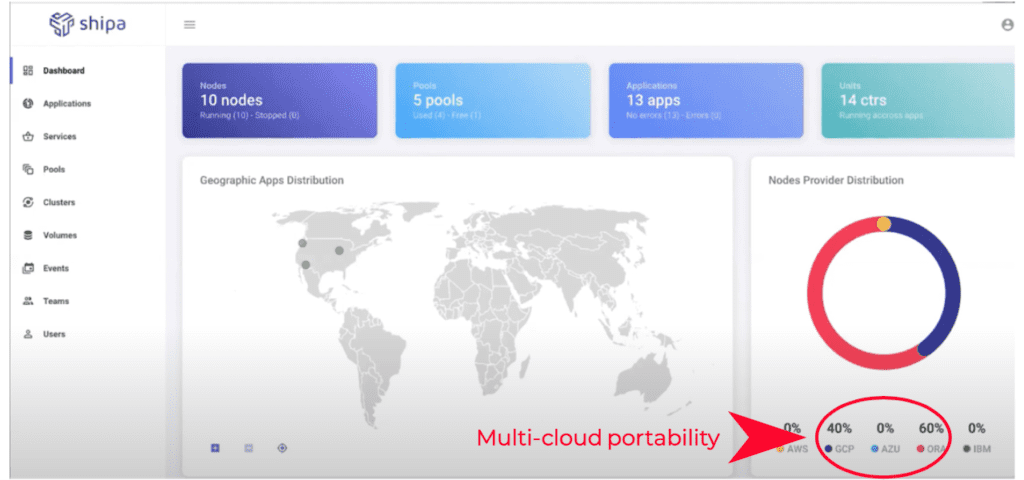Coffee and Containers
“Shipa for Kubernetes: Fireside Chat with Kelsey Hightower”
On October 22, 2020, Shipa launched a new web series called “Coffee & Containers” with our first guests, Kelsey Hightower and Bruno Andrade. C&C was conceived as a place for practitioners and IT leaders to learn and collaborate on all things microservices, cloud-native, containers, Kubernetes, etc.
We were very proud to launch this series with Kelsey Hightower, Thought Leader and Developer Advocate at Google Cloud Platform, and Bruno Andrade, Founder, and CEO of Shipa.io. The topic of the conversation was focused on the current state of Kubernetes and concluded with an “unboxing” and Kelsey’s live/unfiltered impressions on the Shipa application management framework for Kubernetes.
Key topics of the conversation included:
- Application Context
- Integrations into Pipelines
- Application Management Workflows
Here are some highlights from that conversation:
47% of the attendees polled responded that the learning curve and management of an object centric application architecture was the most challenging part of moving to a Kubernetes architecture.
KELSEY HIGHTOWER: “I think this also speaks to another thing that learning is hard in general, I think in terms of new things. When I learned Linux for the first time, I think I’m still about 15, 16 years in, still learning Linux, the system calls, the shell, the various utilities, and how to piece things together. So, I don’t think you’re ever going to stop learning. I don’t think it’ll be easy. But specifically, the question here, which is in managing all these objects, right, so what does that mean? I think a lot of times, at least me personally, we come from a world where you automate things you understand, or you use scripting languages that let you do pretty much anything. If this, do that, and then you can navigate through there.”
“it’s going to be a learning curve because Kubernetes will force you to learn its type of structure before you can do anything, but that’s only at the base level. I’m hoping today, and we can dig into how tools like Shipa that rightfully so sit above that statically-typed language of Kubernetes to provide these workflows, the things that people say should be much easier. I believe, tools above it should be doing that work.”
BRUNO ANDRADE: “I think it’s important for you to understand what is happening in and how the objects are interacting and how this relates to your application itself. When we started thinking about building it with Shipa for Kubernetes, we interviewed a lot of users and realized that was a big issue for them. A lot of them were even asking, “What is an application on Kubernetes? Because after I deploy my objects, basically, they become these objects in the cluster, and they have no relation.”
“We allow the users to deploy without having to create these objects manually, but at the same time, we give you the visibility.”

KELSEY HIGHTOWER: “Hey, isn’t this like what Openshift is doing? What’s different?”
BRUNO ANDRADE: Great question…You have to use OpenShift clusters on IBM or on whatever clouds they are supporting right now. It becomes costly from different points, either from licensing calls or from you having to use a specific cluster. I hear that upgrades are really troublesome, and so on. So, you’re locked into that. The other thing is how they operate from an application level, there’s a lot of rip and replace that you have to do, such as when it comes to your CI pipeline and CD.
With Shipa, we’re plugging into your existing CI/CD pipeline. In the post-management of the apps, we’re backing a lot of the object management perspective. While with Shipa, it’s giving you the application context view through and through. So, at least the way I put them is it’s your traditional past. If we’re thinking about building a scalable infrastructure and allow you to have control over everything, it may be a challenging option for you.
KELSEY HIGHTOWER: I guess the case is if I understand, right, can I just connect Shipa to Openshift since Openshift has Kubernetes in there? Can I just literally connect Openshift and just use the Kubernetes interfaces, just like I would GKE if I prefer this better?
BRUNO ANDRADE: Yeah, and then we’ve seen users actually going down that route, exactly because of that. They have some Kubernetes in house. They started in the Openshift. They saw that they wanted more flexibility. So, layering over Shipa for Kubernetes on top of Openshift is the option and the route that they’re going in that case.
Try Shipa Today!
Full lifecycle application-centric framework for Kubernetes so everyone can focus on applications
Get Started
Share on email
Email
Share on twitter
Twitter
Share on linkedin
LinkedIn

